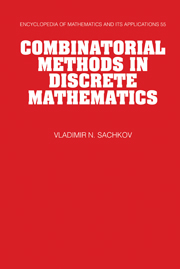Introduction
Published online by Cambridge University Press: 22 March 2010
Summary
With advances in cybernetics and closely related divisions of science, discrete mathematics has found increasing importance as a tool for the investigation of various models of functioning of technical devices and discretely operating systems.
A significant place in discrete mathematics is occupied by combinatorial methods whose applications can help in solving the problems of the existence and construction of arrangements of elements according to certain rules, and in the estimation of the number of such arrangements. Each arrangement determines a configuration which can be considered as a mapping of one set onto another with some restrictions posed by a particular problem. If the restrictions are complicated, then we are faced with the problem of determining conditions of existence and suggesting methods of construction of such configurations.
In Chapter 1 such questions are considered for block-designs and Latin squares. The results presented in the chapter are intended to provide an insight into the typical problems of this area of combinatorial mathematics.
Chapter 2 is devoted to transversals, usually referred to as systems of distinct representatives of a family of sets. Permanents are the main tools for calculating the number of transversals of a family of sets. In this chapter methods of calculating the values of permanents are considered. These calculations meet with more difficulties than do calculations of determinants, those objects which in respect of many other properties are close to permanents.
- Type
- Chapter
- Information
- Combinatorial Methods in Discrete Mathematics , pp. xi - xivPublisher: Cambridge University PressPrint publication year: 1996



